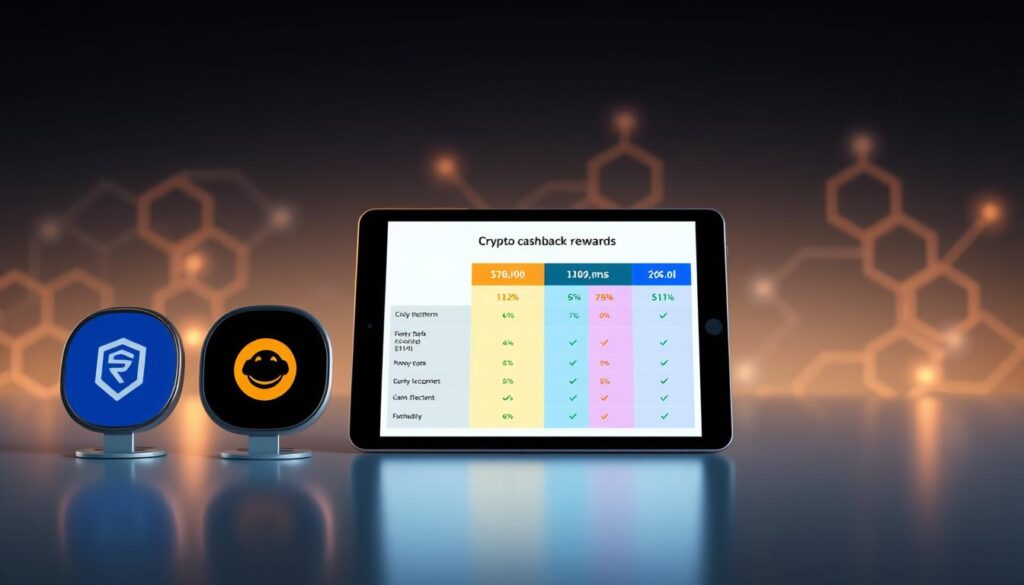Now Reading: Decentralized Exchange Crypto: How It Works and Its Benefits
- 01
Decentralized Exchange Crypto: How It Works and Its Benefits
Decentralized Exchange Crypto: How It Works and Its Benefits

Imagine a marketplace where you can trade digital assets directly with others, no middlemen involved. That’s the core idea behind peer-to-peer cryptocurrency trading platforms. These systems use blockchain technology to let users swap tokens securely while keeping full control of their funds.
Unlike traditional platforms, these services rely on smart contracts to automate transactions. This eliminates the need for centralized oversight, reducing risks like hacking or frozen accounts. Anyone with internet access and a digital wallet can participate, breaking down geographic barriers to financial opportunities.
The rise of automated market makers has transformed how liquidity works in these spaces. Instead of order books, liquidity pools powered by user deposits enable instant trades. This innovation helped boost adoption – from handling just 0.11% of global crypto trades in 2019 to over 14% by late 2023, according to industry reports.
Key Takeaways
- Maintain complete ownership of assets during transactions
- Enhanced security through blockchain verification processes
- 24/7 global access without geographic restrictions
- Automated systems replace traditional brokerage functions
- Growing selection of platforms with over 35 active options
- Trade volumes exceeding $40 billion monthly as of 2023
Introduction to Decentralized Exchange Crypto
Modern financial systems are evolving with platforms that empower individuals to trade directly, cutting out intermediaries. These systems replace traditional brokers with self-executing code that manages transactions securely. Users retain ownership of their assets at all times, removing the risk of third-party mismanagement.

At their core, these platforms use automated agreements to match buyers and sellers. This approach eliminates centralized control, reducing vulnerabilities like hacking or frozen accounts. Every transaction occurs through personal wallets, ensuring funds never leave the trader’s custody.
Three key features define this innovation:
- Direct wallet-to-wallet transfers via blockchain networks
- Continuous market access across time zones
- Automated pricing through pooled liquidity
The technology’s growth stems from its ability to operate without geographic restrictions. Over 35 active platforms now facilitate billions in monthly trades, appealing to those seeking financial independence. Advanced tools like cross-chain compatibility further enhance their utility, enabling swaps between different blockchain ecosystems.
Security remains a cornerstone, as smart contracts undergo rigorous testing before deployment. This framework minimizes human error while maintaining transparency – every transaction is publicly verifiable yet pseudonymous.
How Decentralized Exchanges Operate
Digital asset trading platforms operate through automated protocols that redefine traditional financial interactions. These systems use blockchain-based tools to execute agreements without human oversight, prioritizing security and accessibility.

Role of Smart Contracts in Execution
Smart contracts act as digital referees, enforcing predefined rules for every transaction. These programs automatically verify balances, confirm terms, and transfer assets when conditions meet. Errors or mismatches instantly halt the process, preventing incomplete trades.
Three critical functions define these automated agreements:
- Instant validation of wallet balances
- Real-time price calculations using pool ratios
- Simultaneous token swaps between parties
Understanding Peer-to-Peer Trading Mechanics
Instead of waiting for matching orders, users interact with liquidity pools filled by other traders. Mathematical formulas adjust prices based on supply and demand within these shared reserves. When you swap tokens, the system locks your deposit, computes the output, and completes the exchange in one motion.
This approach eliminates traditional bottlenecks. Transactions finalize in seconds, with records permanently stored on-chain. Over $40 billion in monthly volume flows through these systems, proving their efficiency for modern traders.
Key Benefits and Innovative Features
Peer-to-peer trading platforms revolutionize finance by prioritizing user empowerment. These systems combine cutting-edge technology with novel incentives, creating opportunities that traditional markets can’t match. Let’s explore their standout advantages.

Securing Assets and Reducing Counterparty Risk
Users maintain full control of their funds at all times. Unlike traditional setups, assets never leave personal wallets during trades. This eliminates reliance on third-party custodians, slashing risks like platform insolvency or unauthorized withdrawals.
Advanced encryption and blockchain verification protect every transaction. Smart contracts automatically validate terms before executing swaps, ensuring errors get flagged instantly. These security-first features make breaches exponentially harder compared to centralized alternatives.
Yield Farming and Liquidity Incentives
Liquidity providers earn passive income through yield farming. By depositing tokens into shared pools, they receive a cut of trading fees and bonus rewards. Platforms often distribute native tokens as extra incentives, creating multiple income streams.
Popular strategies include earning crypto rewards through automated protocols. Some pools offer over 20% APY, though returns vary with market conditions. This system keeps markets fluid while rewarding participants – a win-win for active traders.
Three standout features redefine modern trading:
- Instant access to global markets 24/7
- Permissionless listing of new assets
- Automated tools for portfolio management
Smart Contracts, Multichain Integration, and Cross-Chain Swaps
Blockchain technology continues pushing boundaries through automated agreements and interconnected networks. Advanced smart contracts now power intricate financial tools, while multichain systems break down barriers between isolated blockchain ecosystems. This evolution creates seamless value transfers across diverse protocols.
Advanced Smart Contract Functionality
Modern smart contracts handle complex operations beyond basic token swaps. They enable automated options trading, synthetic asset creation, and risk-managed futures – all executed on-chain without brokers. These self-operating programs can:
- Trigger multi-step transactions across multiple DeFi platforms
- Adjust terms based on real-time market data
- Secure collateral through algorithmic verification
Benefits of Multichain Capabilities
Cross-chain bridges let users move tokens between networks like Ethereum and Solana effortlessly. This multichain approach offers three key advantages:
- Cost efficiency: Choose chains with lower fees for specific transactions
- Market access: Tap into niche liquidity pools across ecosystems
- Network resilience: Avoid congestion by switching chains
DeFi bridges use validator networks and cryptographic proofs to ensure secure asset transfers. Over 50% of major platforms now support cross-chain swaps, reflecting growing demand for interconnected blockchain services.
Comparing Decentralized and Centralized Exchanges
The financial landscape offers two distinct paths for digital asset trading – platforms that prioritize user sovereignty versus those favoring institutional oversight. At the heart of this comparison lies a critical choice: retain full asset control or delegate custody for convenience.
Control Over Funds and Trading Autonomy
Self-custody models let traders interact directly from personal wallets, eliminating third-party access. Users sign transactions using private keys, ensuring assets never leave their possession. This contrasts sharply with traditional platforms requiring deposits into custodial accounts – a practice responsible for over $3 billion in losses from hacks since 2020.
Fee Structures and Slippage Considerations
Centralized services often employ complex fee tiers, charging up to 0.6% per trade based on volume. Automated platforms typically apply flat 0.3% fees distributed to liquidity providers. Price impact becomes noticeable when swapping large amounts in pooled systems – a $50,000 trade might experience 2-5% slippage versus near-instant execution on order-book platforms.
Three key differences shape user experiences:
- Asset security: Personal wallets vs. exchange-controlled storage
- Trade execution: Automated pool pricing vs. market maker coordination
- Regulatory alignment: KYC requirements vs. pseudonymous access
While centralized options offer advanced tools, they introduce counterparty risks. Automated systems trade sophistication for censorship resistance – a growing priority for 68% of traders surveyed in 2023.
Product Roundup: Leading Decentralized Platforms
The evolution of digital asset trading has given rise to specialized platforms catering to diverse needs. Five standout services redefine how users interact with blockchain markets through unique trading features and network compatibility.
Innovative DEXs Like Milk Road Swap and Uniswap
Milk Road Swap simplifies cross-chain swaps between Solana and Ethereum through its Radium Protocol integration. Launched in 2025, this dual-network platform uses Cow Swap technology for instant transactions. Users enjoy one-click conversions between popular tokens without bridging complexities.
Uniswap maintains dominance with its concentrated liquidity pools. Providers now set custom price ranges, boosting capital efficiency by 400% compared to traditional models. Deployed across 20+ EVM networks, it processes over 60% of all automated market maker trades.
Unique Features of Curve, 1inch, and PancakeSwap
Curve’s algorithms enable near-zero slippage for stablecoin pairs. Its vote-locking system lets stakeholders influence reward distribution – a model copied by 18 competitors. The platform handles 35% of all stablecoin trades across supported chains.
1inch aggregates liquidity from 42 exchanges, ensuring optimal rates through smart order routing. PancakeSwap dominates Binance Smart Chain with sub-$0.10 fees and 3-second confirmations. Both platforms prove ideal for investors seeking low-cost entry points.
- Milk Road: Dual-chain swaps without bridging
- Uniswap V4: Customizable liquidity ranges
- Curve: Stablecoin-focused pools
- 1inch: Multi-exchange rate comparisons
- PancakeSwap: High-speed EVM trading
Evaluating Security and Governance in DEX Platforms
Trust anchors every blockchain-based trading system. Leading platforms combine security protocols with collaborative decision-making to build resilient ecosystems. Open-source development through GitHub and community forums like Matrix ensures transparency in every code update.
Community-Driven Protocol Management
The Bisq DAO exemplifies governance models that put power in users’ hands. Token holders vote on upgrades and treasury allocations, with proposals requiring majority approval. This approach reduces centralization risks while aligning platform evolution with user needs.
Multi-Layered Safety Measures
Reputable security firms audit smart contracts before deployment, hunting for vulnerabilities. Ongoing protection includes bug bounty programs paying researchers for flaw discoveries. Critical functions use time-delayed execution and multi-signature approvals to prevent exploits.
Three pillars support platform integrity:
- Public code repositories enabling peer reviews
- Staged rollouts for major updates
- Real-time monitoring of contract interactions
Active community participation shapes both security practices and governance structures. Over 60% of major platforms now use similar protocols, creating safer environments for managing digital assets.
FAQ
How do platforms like Uniswap execute trades without intermediaries?
They rely on smart contracts to automate order matching and settlement. This peer-to-peer system allows direct asset swaps between users’ wallets, eliminating third-party control.
What security benefits do these platforms offer compared to traditional options?
Users retain full control of their assets via private keys, reducing counterparty risk. Since funds aren’t held by a central entity, hacking targets are minimized.
How can participants earn passive income on DEXs?
By contributing to liquidity pools or engaging in yield farming, users receive incentives like trading fees or governance tokens. Protocols like Curve optimize rewards for stablecoin providers.
Why are multichain capabilities important for swapping assets?
Integration with networks like Ethereum, BNB Smart Chain, and Polygon enables cross-chain swaps. This expands access to diverse assets and reduces reliance on a single blockchain’s speed or fees.
How do fee structures differ from centralized platforms?
Transactions typically incur network gas fees instead of high platform commissions. However, costs vary based on congestion, and slippage might affect large orders in low-liquidity pools.
Which platforms stand out for specialized features?
1inch aggregates liquidity across multiple DEXs for better rates, while PancakeSwap focuses on BNB Chain projects. Uniswap v3 introduced concentrated liquidity, and Milk Road Swap emphasizes user-friendly token launches.
What measures ensure smart contract safety?
Leading projects undergo third-party audits by firms like CertiK and OpenZeppelin. Many also implement decentralized governance, letting token holders vote on protocol upgrades.
Are there risks unique to automated market maker (AMM) models?
Yes. Impermanent loss can occur when pool asset values diverge. Users should also monitor TVL (Total Value Locked) and pool diversity to assess liquidity health.













